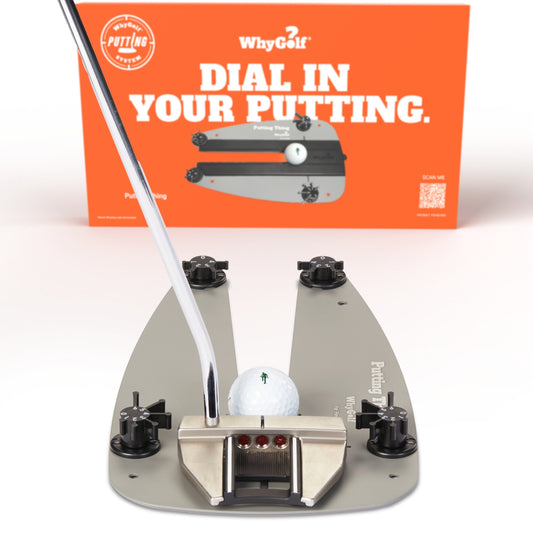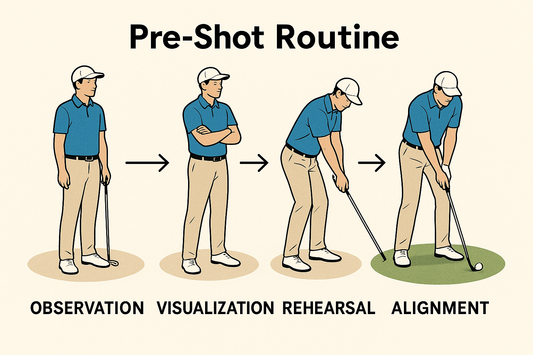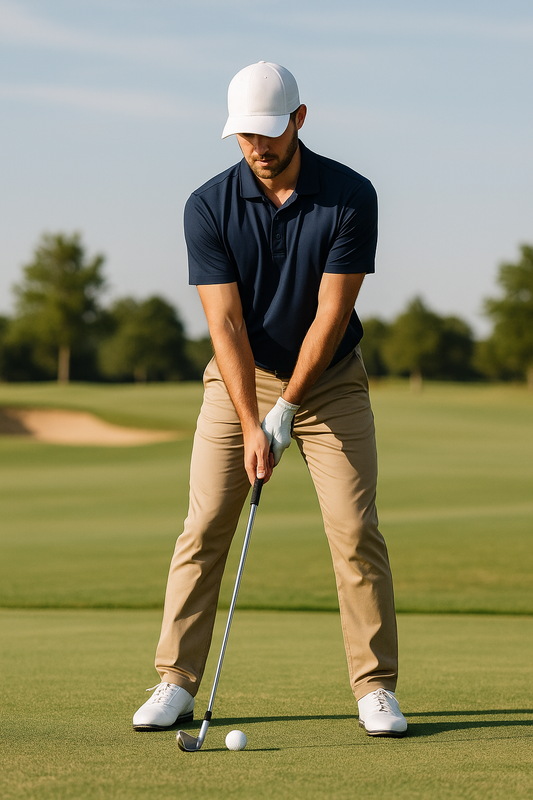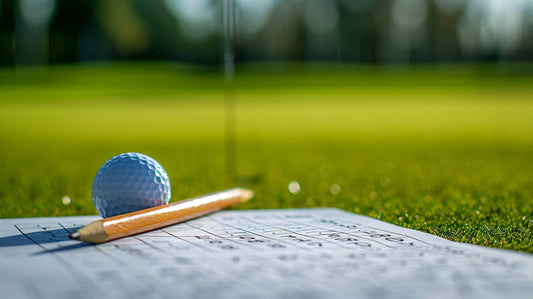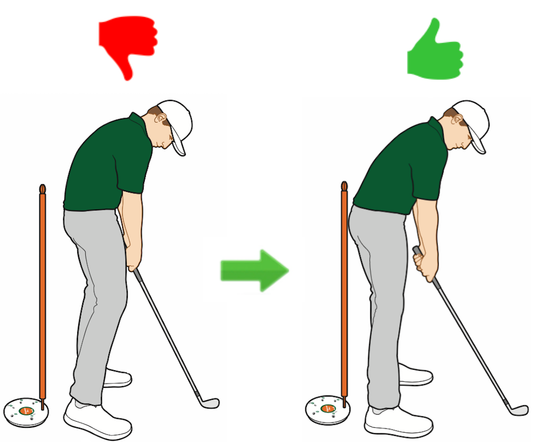Author: WhyGolf WhysGuy
We want to preface this guide with the acknowledgment that neither WhysGuy nor anyone from the WhyGolf team claims to know everything about the golf swing. We don’t want anyone to treat what we say here as gospel. While much of what we’ll say is a reflection of decades of dialogue with PGA instructors and players, we’re always learning and we understand that knowledge about the sport of golf will continue to evolve over time.
In this post, WhysGuy will discuss:
- How to ensure you're making the most of your time on the driving range.
- How the right golf training aids can make your practice more productive.
How frequently do you find yourself feeling worse about your golf swing after beating balls on the driving range?
Don't worry, we've all been there. When you’re done reading this article you’ll have a plan to never waste time (and money) on the driving range again.
Here are our best driving range tips to ensure you get better with each session:
1. Warm Up Properly
Starting your range session with a proper warm-up is crucial. It's not just about loosening your muscles; it's about preparing your body for the physical demands of golf. Begin with gentle stretches to increase flexibility, focusing on your shoulders, back, and hips. Then, start hitting balls with the easiest clubs to handle, like your wedges, before progressing to longer clubs like irons, woods, and finally the driver. This step-by-step approach helps your muscles adapt and reduces the risk of injury. Remember, your body needs to be warmed up to perform those 100 mph swings effectively and safely. If you want to learn how to increase your clubhead speed on the driving range, you can read our article here.
2. Dial in Your Fundamentals
Fundamentals are the cornerstone of any good golf swing. This includes getting your ball position, grip, alignment, and posture right. Take time to set up each shot as if it were the most important you'll hit. Check your alignment with alignment rods to ensure you're aiming correctly. This is more than just facing your target; it's about setting up your feet, hips, and shoulders in the right direction. Improper alignment can lead to compensations in your swing, which might cause long-term issues. Additionally, focus on maintaining a balanced and comfortable stance and grip. These basics, though they may seem mundane, are what can set apart a good practice session from a great one.
3. Use the Right Training Tools
Training aids are invaluable tools for addressing specific aspects of your swing. They provide immediate feedback and help create muscle memory for the correct movements.
For example, if you struggle with weight transfer, use aids like our Pressure Plate to understand how to shift your weight effectively for more power and better contact.
Similarly, if you're working on preventing an 'over the top' swing, aids like the ArmAlarm can help you keep your arms in the right position. The key is to use these aids to reinforce good habits, alternating between shots with and without them for a balanced practice.
4. Hit Different Clubs to Different Targets
Varying your club selection and targets is essential for a well-rounded practice. It's easy to fall into the trap of repetitively hitting the same club, but that doesn't mimic on-course conditions.
Challenge yourself by hitting different clubs to various targets. Practice shaping your shots - hitting high, low, fades, and draws. This not only makes your practice more engaging but also improves your adaptability and shot-making skills on the course.
If you want to learn more about how to hit draws or fades, click here.
5. Practice Your Routine
A consistent pre-shot routine is a hallmark of great golfers. It's about creating a repeatable process that prepares you mentally and physically for each shot.
Start by selecting your target and taking practice swings behind the ball. Use an intermediary target a few feet in front of your ball to aid in alignment. Then, take a deep breath to relax, walk into your stance, and align your clubface to the intermediary target.
Finally, confirm your long-range target, give a few waggles to relax your hands and arms, and execute your shot. Consistently practicing this routine will enhance your focus and confidence during play.
6. Don't Forget Your Short Game
The short game often makes the difference in golf scores. Allocate a significant portion of your practice time to putting, chipping, and pitching. Practice putts of varying lengths, work on your touch with wedges, and master different types of short game shots like the bump and run.
If you struggle with sand play, use aids like our Bunker Mate to replicate bunker conditions. Balancing your practice time between the full swing and short game is key to overall improvement.
How to Practice at the Driving Range - Key Takeaways:
- Always warm up and stretch before hitting balls.
- Don't neglect your short game; it's roughly 50% of your total score.
- Focus on fundamentals like alignment, grip, balance and posture.
- Pick different targets and hit different clubs to make practice more realistic.
- Use the right training tools to work on your swing faults and improve your mechanics.
- Understand that quality is better than quantity when it comes to hitting balls. Practice with intention!
Ready to make an investment in your golf swing? Explore our suite of golf training aids here.
How many balls should I hit at the practice range?
There is no specific number of golf balls you should hit at the driving range as it depends on the goal.
If you’re working on a major swing change you might need to hit more golf balls to make the changes feel more comfortable. If you have a member guest tournament the next day, you might just hit a small bucket of balls to find a swing thought for the upcoming round.
Don’t fall into the trap of thinking that hitting more golf balls and practicing longer means it’s a better practice session.
Why do I hit better at the driving range?
In most cases it’s because there is no pressure or hazards (like water, out of bounds, etc.) like there is with a golf course. To make your practice more realistic to the course, create challenges or place bets with a friend.
Is it better to practice on the driving range or course?
The driving range is a great place to work on your fundamentals and groove a consistent swing. But the golf course itself is another great practice area too as you can practice shots that you can’t on the range. This might include shots over trees, uneven lies, rough, and long bunker shots.
If possible, try to practice on the golf course 20% of the time to try out shots you can’t hit on the range.
How do pros practice on the driving range?
Professional golfers practice with more intention than the everyday golfer. They go out with a plan - to work on certain parts of their game like driving, long irons, wedges, and/or putting.
By improving their weaknesses (usually by studying their statistics) they are able to make more cuts, earn more money, and gain more FedEx Cup points.
To practice like a pro, make sure to have a plan, work on your weaknesses, and analyze your swing. Don’t mindlessly hit balls and hope to get better - use the tips and training aids above.
Why do I get worse at the driving range?
Going to the driving range doesn’t guarantee you’ll get better… which is one of the reasons golf is such an infuriating sport at times. If your game is trending in the wrong direction during practice, try out these strategies.
Check Out Our YouTube Channel For Drills and Tips



